Homemade Candied Fruit: Tanghulu
on Nov 21, 2023
This post may contain affiliate links. Please read my disclosure policy.
Learn the secret to making the perfect Tanghulu or Candied Fruit from strawberries, grapes, or tangerine! The skewered fruits are coated in a hardened sugar syrup that forms a sweet, crispy, and glossy shell. Watch my video tutorial to see how easy to make this FUN Chinese snack that’s crunchy on the outside and juicy on the inside!

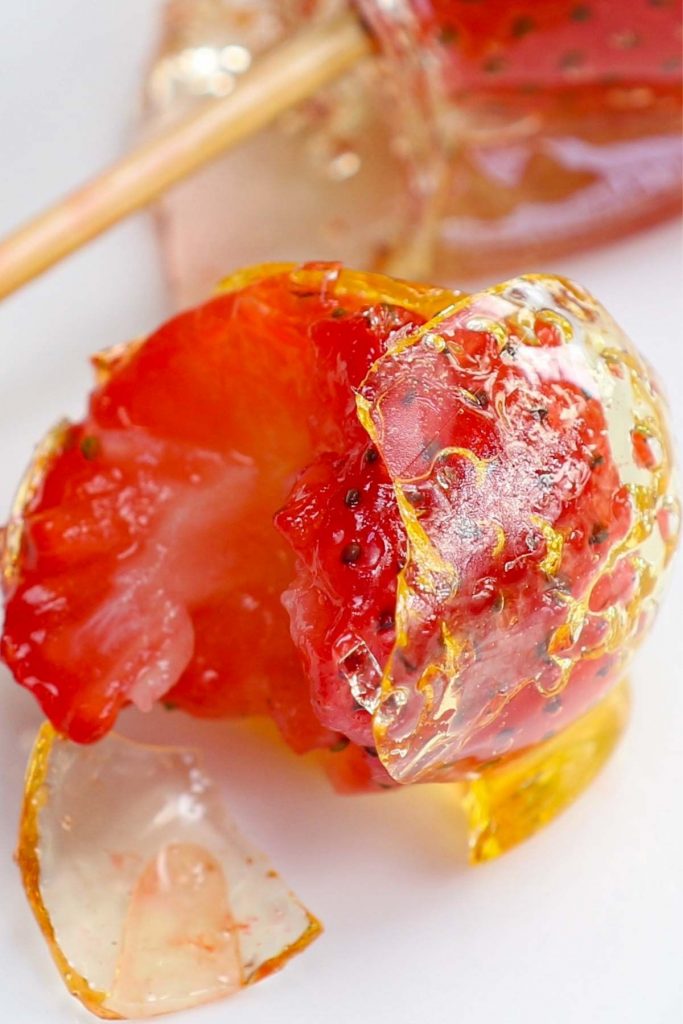
Tanghulu always takes me back to the fond memories of my childhood 😀. My mom always bought me a skewer of glossy and beautiful Tanghulu coated with translucent sugar coating when we spot a vendor at the Chinese New Year festival on a cold winter day!
Although the traditional tanghulu is made of Chinese hawthorn, today I’m sharing an easy recipe made with strawberries or other fruits you have at home. You wouldn’t believe how simple it is to make beautiful candied fruit with just 3 ingredients plus water. This has been one of my all-time favorite things to make since my kids were young! It takes me (and my kids) quite a few tests to make these candied fruits perfect, so make sure to read my tips below!
Watch Easy Tanghulu Recipe Video (1-Minute)
So what exactly is Tanghulu (or candied fruit)?
Known as Tanghulu, this candied fruit snack is a popular street food in sections of Northern China. Traditional tanghulu uses Chinese hawthorn berries, which are not easily accessible here. So we use other fruits like strawberries or grapes. They are coated in a thick, sugary syrup. Once cooled, the sugar coating hardens immediately, creating an irresistible crunchy shell around the fruit.
What does candied fruit taste like? The candy shell is hard and crunchy and makes a satisfying crack as you bite into it. It’s a sweet and decadent introduction to the juicy fruit inside.
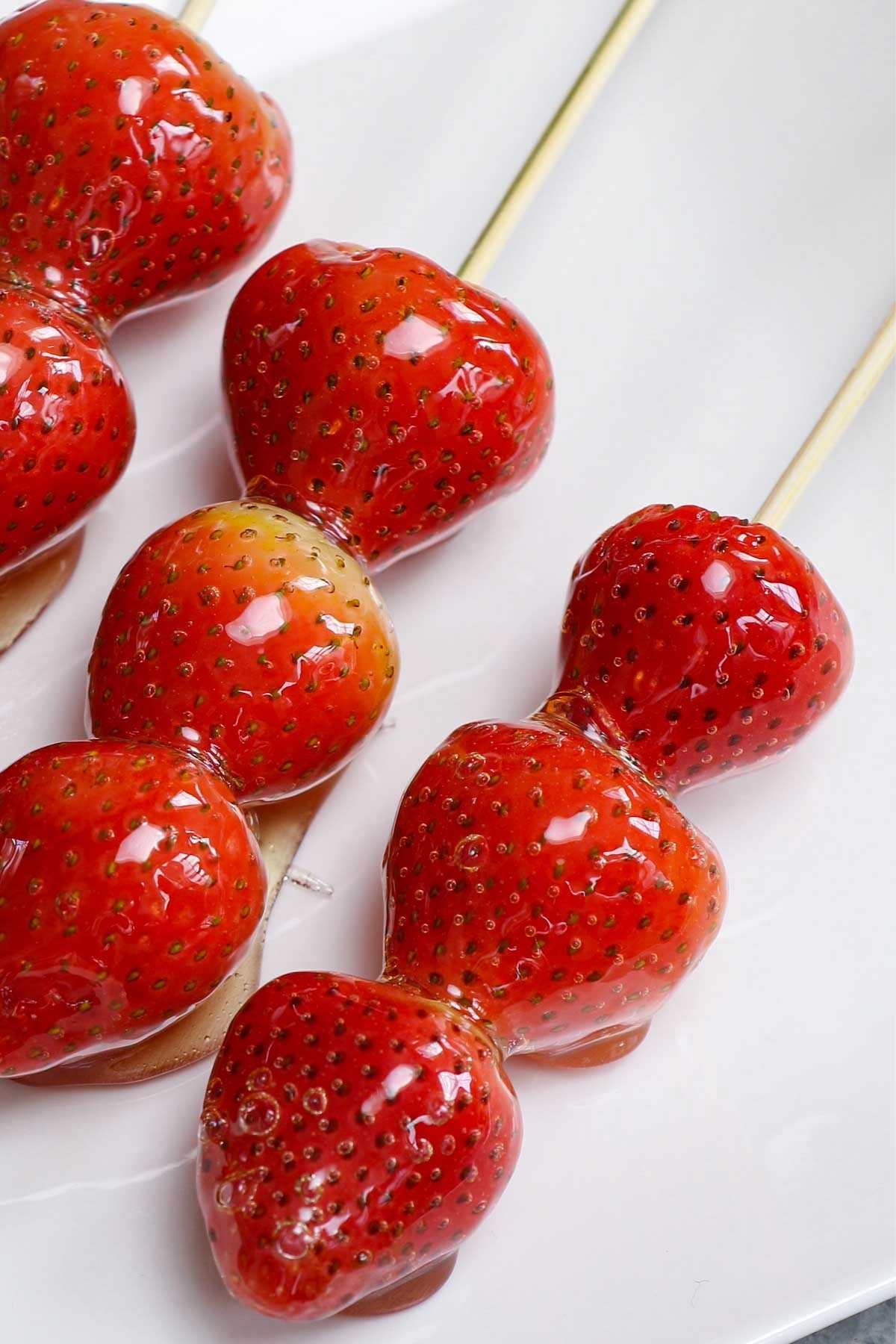
How to Make Homemade Tanghulu
Want to know the secret on how to make Tanghulu that’s perfectly crunchy and juicy? After many experiments with different types of fruits, syrup temperatures, and coating techniques, today’s homemade candid fruits are the BEST! 👍
My candid fruit comes down to 4 simple tips:
- Use the right ingredients, especially my secret ingredient corn syrup for a more crispy and nicer texture.
- Dry fruit thoroughly
- Heat the sugar syrup to the right temperature
- Coat the fruit properly. Make sure to seal the end of each fruit completely so the juice won’t leak out.
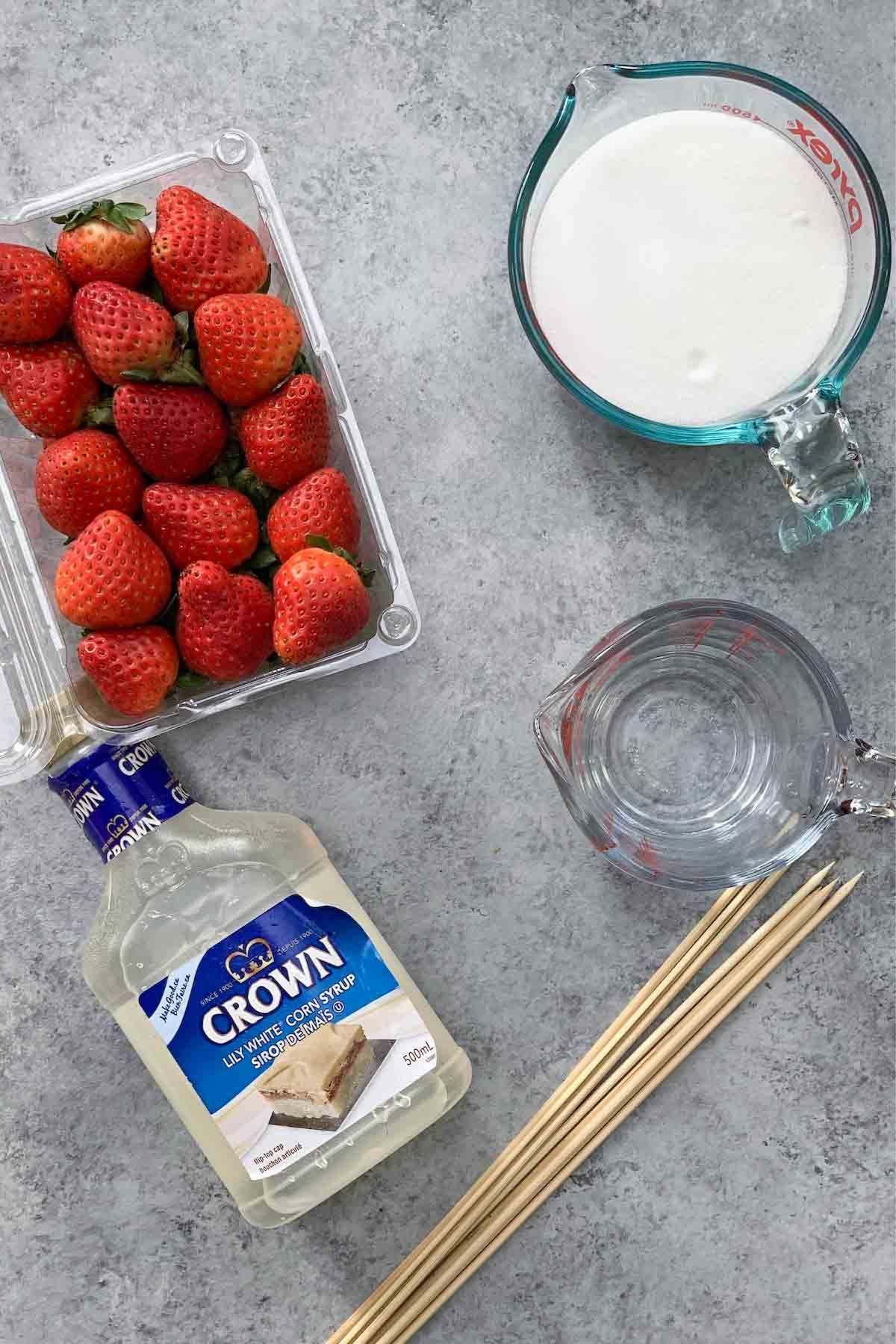
Use the right ingredients
- Fruit: I used strawberries, grapes, and tangerine wedges in this recipe. Blueberries are another tasty option.
- Granulated Sugar: White granulated sugar is the best sugar to use. It’s the base for the coating and creates a beautiful clear coating for your candied fruit.
- Corn Syrup: My secret ingredient! It creates a smoother and glossier finish, resulting nice crispy texture with the right consistency. It also helps to prevent the coating from becoming to hard.
- Cold Water: You’ll want to use chilled (cold) water for this recipe.
Best fruits for candied fruit
You can use a variety of fruits for making candied fruit. Strawberries are the most popular choice for Tanghulu not only because they pair perfectly with the syrup coating, but also because they look most similar to the traditional tanghulu made with Chinese hawthorn! Whichever you use, look for:
- fruits that are not too watery;
- small enough to be inserted into a skewer;
- not overripe and firm enough to hold its shape
Dry fruit thoroughly
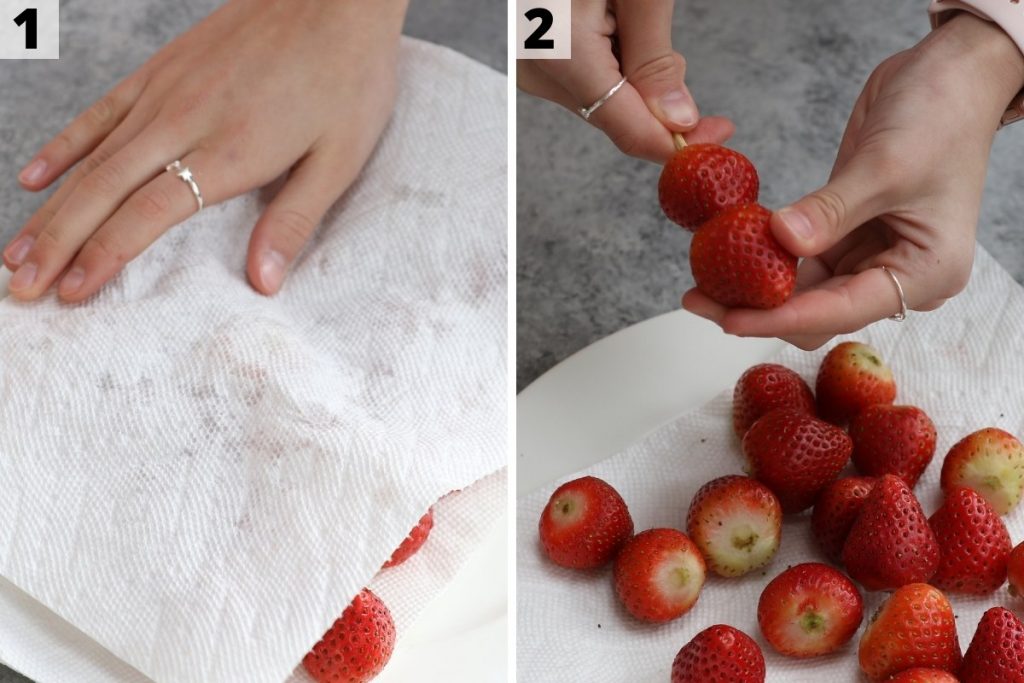
- Pat dry strawberries (or other fruits) THOROUGHLY before using them
- Don’t use too many strawberries on one bamboo skewer, as this will make it difficult to coat all of them if your saucepan is not deep enough. I used 3 strawberries on each skewer.
- In the meantime, get parchment paper ready before dipping. This will prevent your coated fruit from sticking on any surface.
Heat the sugar syrup to the right temperature
If the temp is too high, the coating can become too hard or have a burnt taste. If it’s too low, it won’t harden properly. Make sure to use a candy thermometer to monitor the temperature accurately.

- Use a heavy-duty medium saucepan to prevent the bottom from burning. After adding the sugar, corn syrup, and water. Stir gently to help the sugar melt. Keep the heat on medium the entire time, and stir constantly until the sugar is melted.
- Avoid stirring once the sugar has melted, as it could trigger crystallization and make it harden rapidly. Instead, gently swirl the mixture in the pan.
- Attach a candy thermometer to the pot, making sure the bulb is not touching the bottom of the pan, as this can lead to an inaccurate reading.
- Let the syrup mixture cook for about 15 to 25 minutes until the temperature reaches 320°F. Be patient! Once the temperature reaches this temp, turn off the heat immediately. Avoid burns: Never touch the syrup and use gloves or oven mitts.
- If you don’t have a thermometer, you can dip a teaspoon into cold water and then into the mixture. If it hardens immediately, then the temperature is correct.
Coat the fruit properly
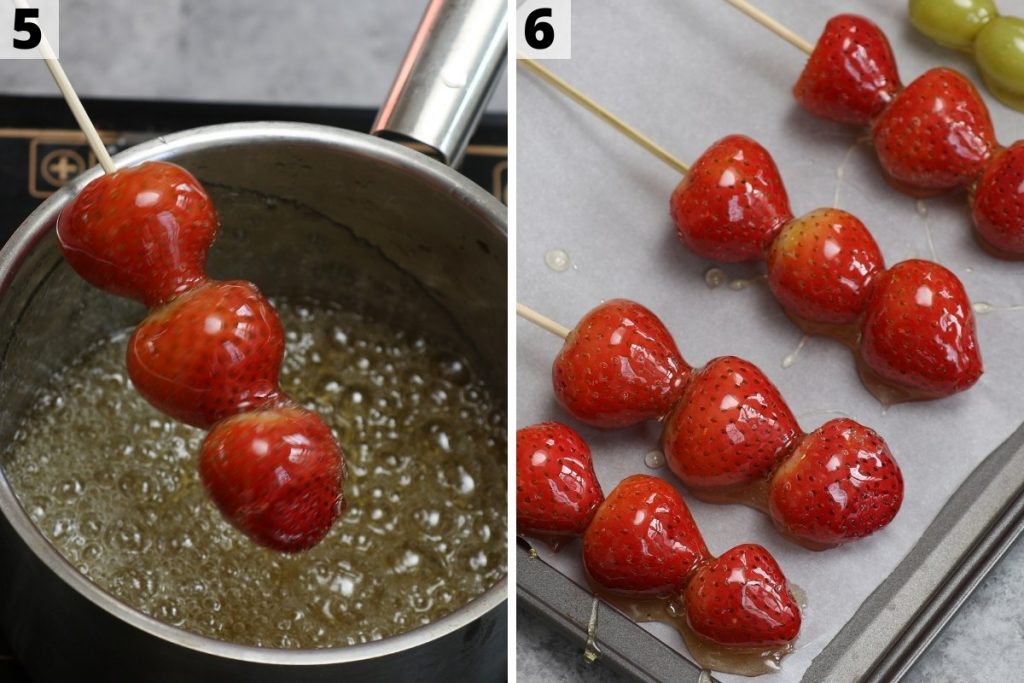
- Move quickly before the liquid candy hardens.
- Tilt the saucepan as needed to submerge each piece of fruit into the syrup completely. Make sure to coat the end of the fruit. Otherwise, the hot candy will soften the strawberries, causing the juice to come out from the end.
- Shake off the excess syrup, otherwise, you’ll end up with a very thick coating piling at the bottom of your fruit.
- Place the coated fruit on the prepared baking sheet. Repeat with the remaining fruits.
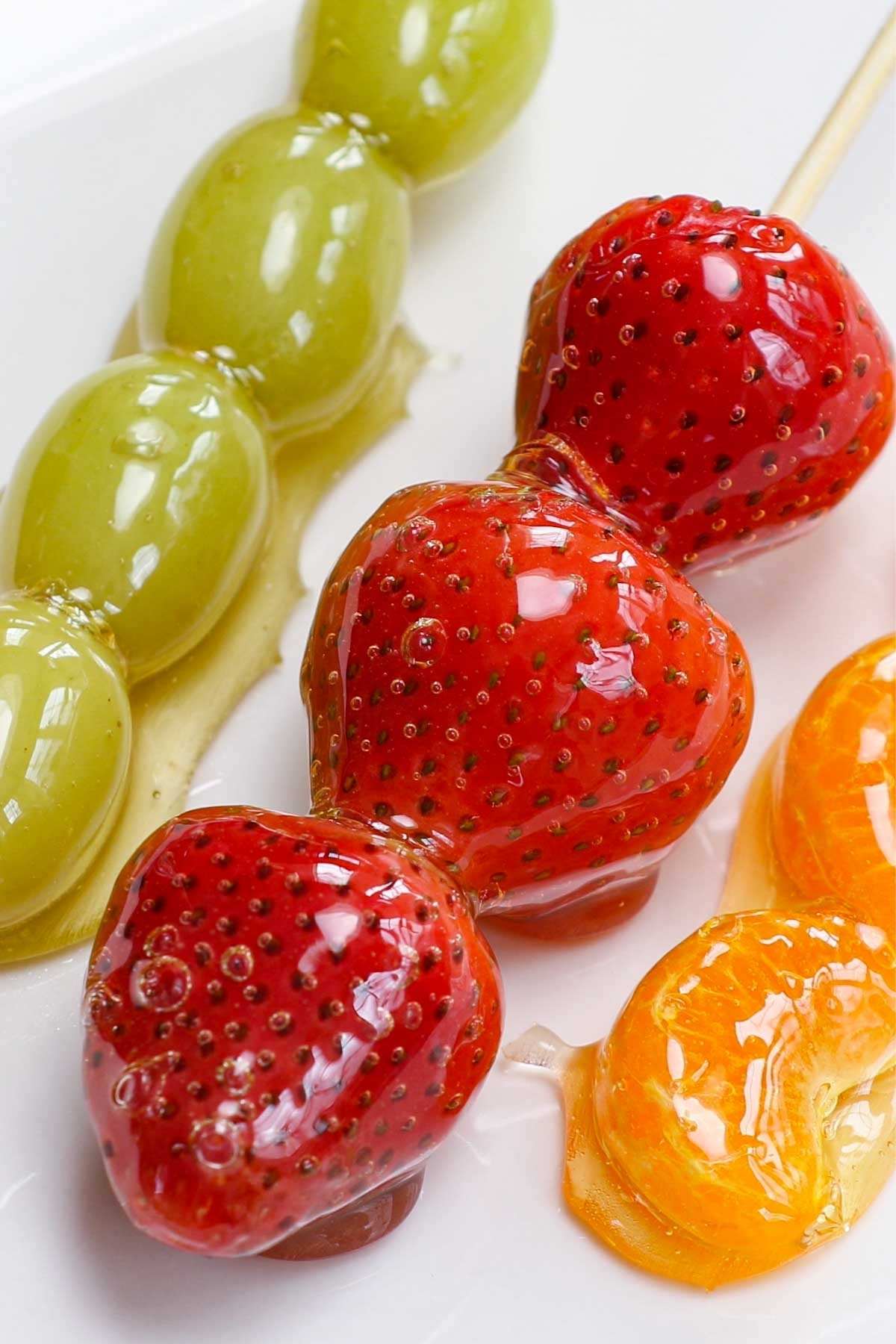
How to store tanghulu
Enjoy homemade tanglulu immediately after it’s set. Do NOT leave them at room temperature as the sugar will melt.
When stored in the fridge, your candied fruit can last for 2-3 days. Keep a stash in your fridge as a sweet treat for yourself or your kids.
More Fruit Recipe Favorites to Try:
If you tried this recipe, let me know how your Candied Fruit turns out in the comments below!
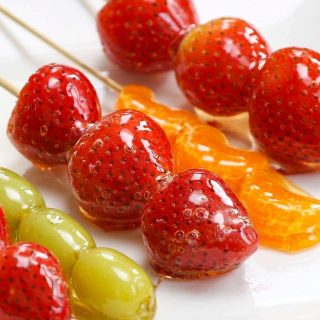
Easy Homemade Tanghulu
Ingredients
- 2 cups granulated sugar
- 1/3 cup corn syrup
- 1/4 cup cold water
- 2 cups fruits of your choice*, you can use strawberries, grapes, or tangerine wedges
Instructions
Prepare the fruit
- Wash the fruit thoroughly with cold water. Cut the green leaves off if using strawberries. Pat dry COMPLETELY with paper towels.
- Insert skewers into the strawberries (or other fruit). Arrange several pieces of fruit on a bamboo skewer. Set aside. (Do not add too many pieces as it might be difficult to coat all of them if your saucepan is not deep enough.)
- Line a baking sheet with a nonstick baking mat or parchment. This will prevent the coated fruit from sticking onto the surface.
Make the Sugar Syrup
- Add sugar, corn syrup, and water to a heavy-duty medium saucepan over medium heat. Don’t use a large saucepan as it can make the syrup too shallow for dipping.
- Stir gently to help the sugar melt. Do not turn the temperature up or down – keep it at medium heat the entire time. Stir constantly until the sugar is melted.
- Once the sugar has mostly melted, stop stirring and bring it to a boil. Attach a candy thermometer into the pot, making sure the bulb is not touching the bottom of the pan, as this can lead to an inaccurate reading.
- Without stirring, let the syrup mixture cook for about 15 to 25 minutes until the temperature reaches 320°F (hard crack stage). If you don’t have a thermometer, dip a teaspoon into cold water and then into the mixture. If it hardens immediately, then the temperature is correct. Once the temperature reaches 320°F, turn off the heat.
Coat the Fruit
- Holding the skewer, dip your fruit into the saucepan, and tilt the saucepan as needed to submerge each piece of fruit into the syrup completely. Make sure to coat the end of the fruit. (Otherwise, the hot candy will soften the strawberries, causing the juice to come out from the end.)
- Lift the skewer and swirl it around to gently tap it against the side of the saucepan to shake off the excess syrup. Place the coated fruit to the prepared baking sheet. Repeat with the remaining fruits.
Let it Set
- Allow the candied fruit to set for 10-15 minutes before serving.
- To eat a tanghulu, you can bite right into it or pull the fruits out of the stick and place them on a plate.
- For later enjoyment, you can loosely cover it with plastic wraps and store the leftover candied fruit in the fridge for 2-3 days.
Notes
- *Fruit Selection: Suitable fruits include strawberries, grapes, tangerine or clementine wedges.
- Safety: Boiling sugar syrup is extremely hot and can cause serious burns. Use a deep saucepan and don’t let the mixture exceed 1/3 full. Never touch the liquid directly. Best to use gloves or oven mitts when handling the pot.
- Don’t stir the sugar water mixture once it’s melted, as doing so can cause crystals to form and solidify the mixture. Instead, you can gently swirl the liquid around the pot to wash down crystals that may form on the edges.
- Tips for cleaning a sticky saucepan: Once you’ve done cooking, simply fill the sticky saucepan with water until it covers the syrup residue. Place the saucepan on the stove over low heat. Let it simmer until the residue dissolves. Pour out the water, and let it cool down slightly. Rinse it for easy cleaning.
Nutrition
Nutrition information provided is an estimate only and will vary based on ingredient brands and cooking methods used.
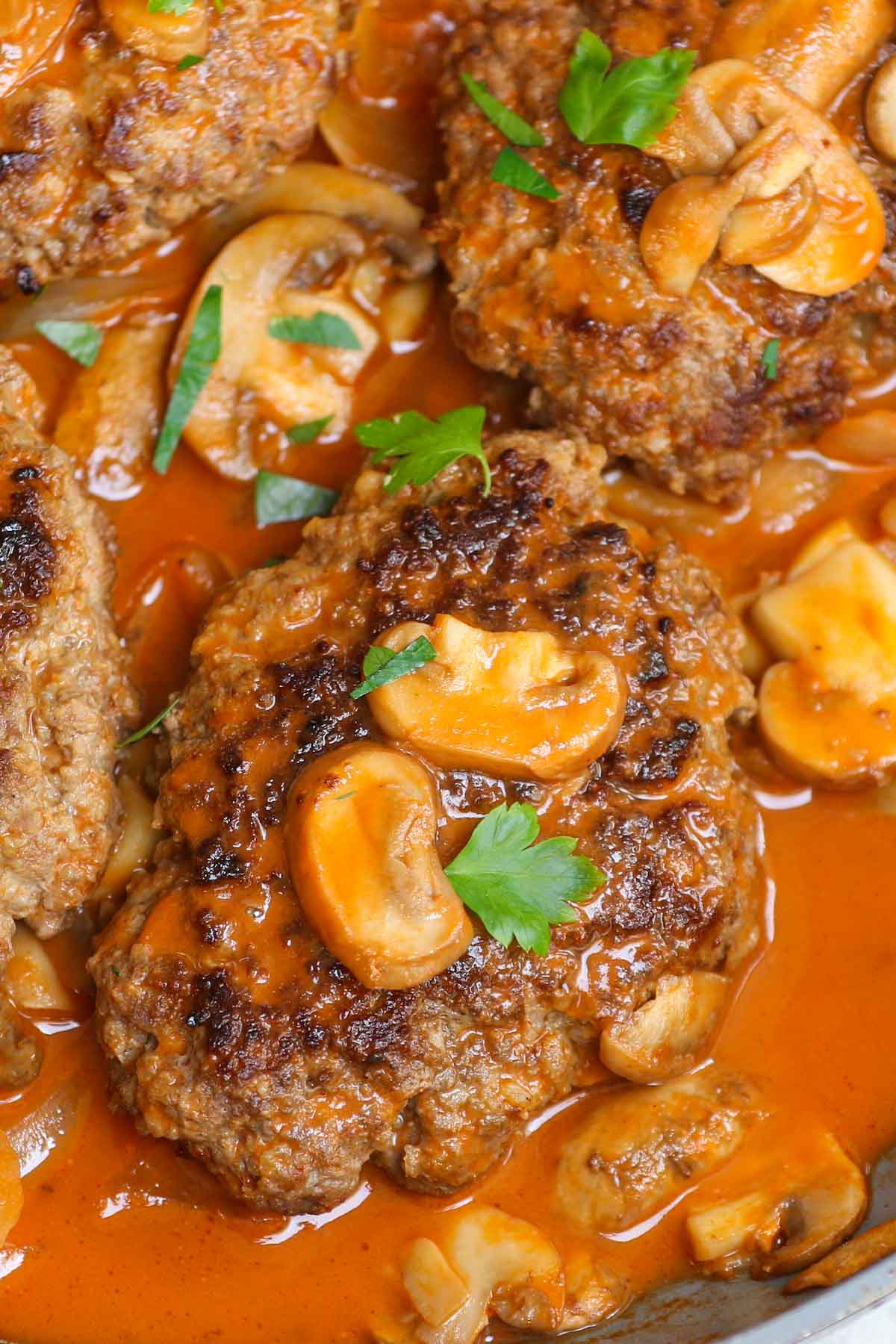
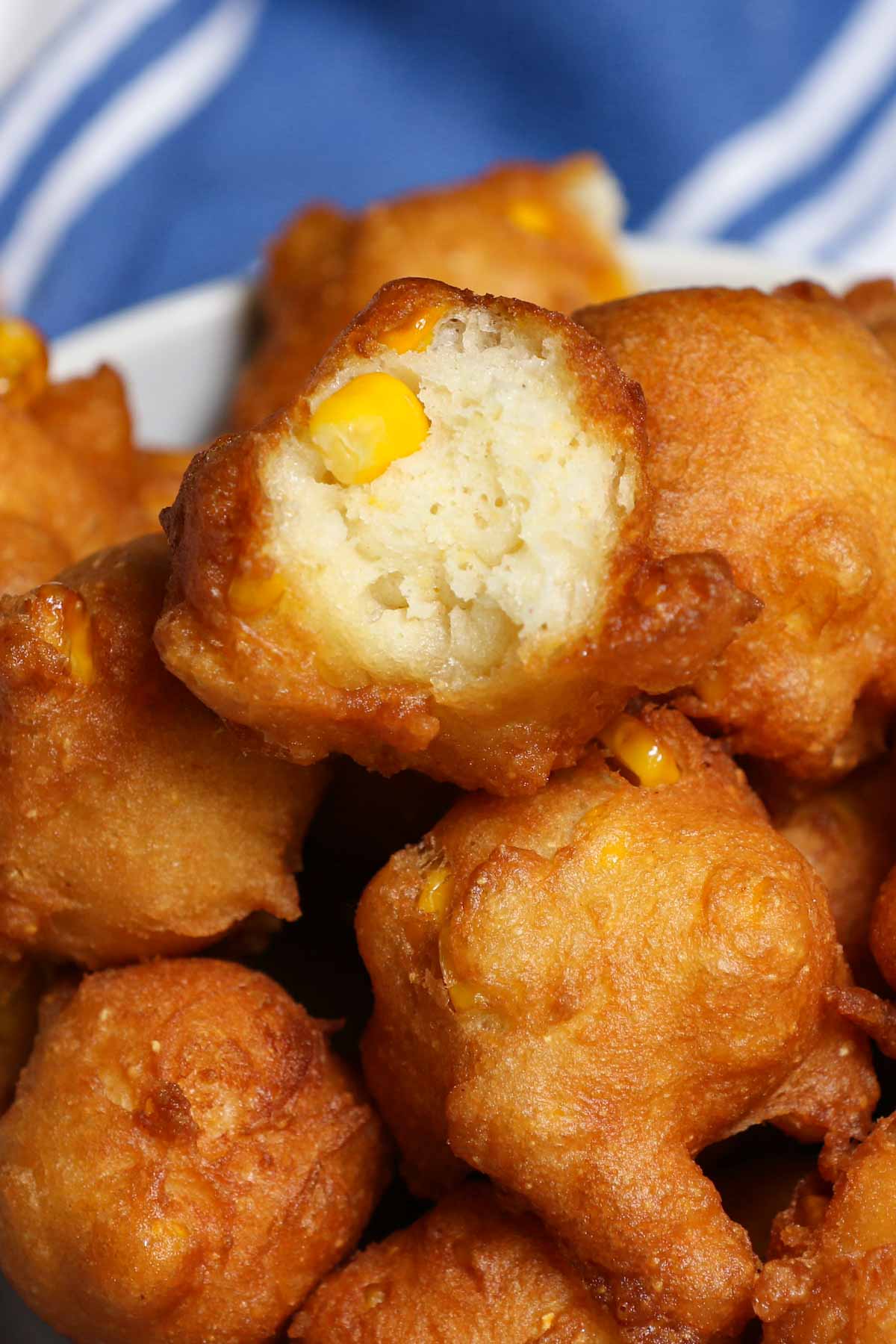

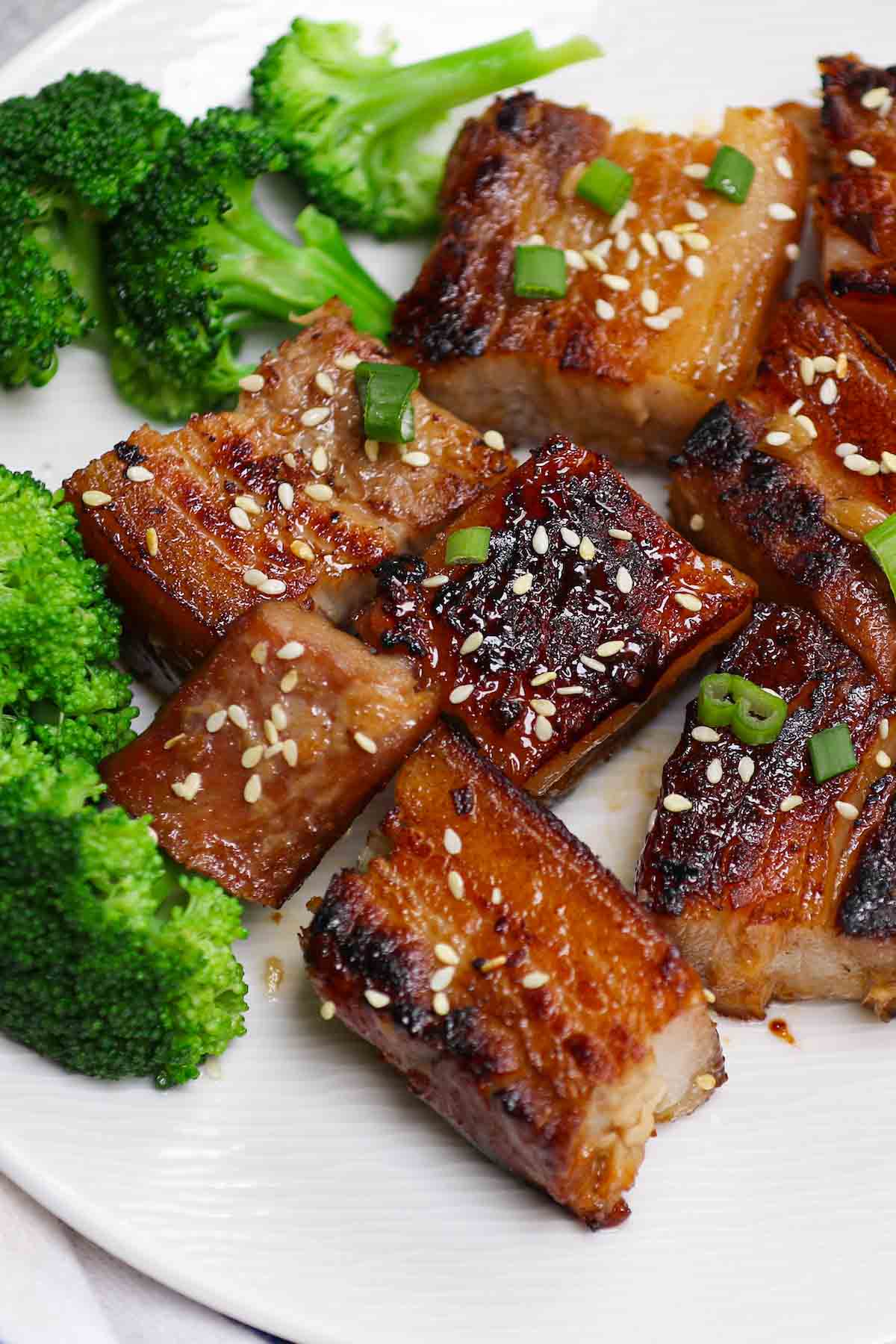
Made these today and I CANNOT stop eating them! Thank you for sharing the recipe!
I made these and they were amazing but after a while my sugar turned brown. What did I do wrong?